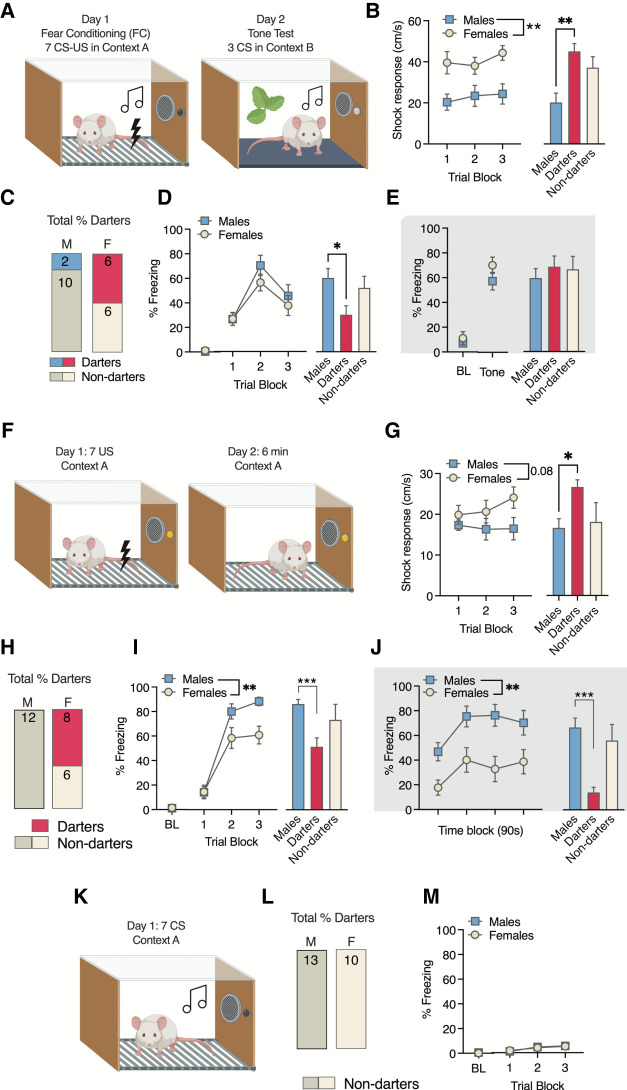Figure 2.
Darting occurs in both cued and context conditioning experiments. (A) Experimental design for cued conditioning. (B) Shock response in males and females across trial blocks (left) and on average (right), with darters (fuchsia) shown separately from nondarting males (blue) and females (white). (C) Proportions of darters in each sex (n = 12 each sex). (D) No sex differences in freezing during conditioning were observed (left), but darters froze less than nondarting males. (E) No group differences in freezing were observed on day 2. (F) Experimental design for context conditioning. (G) Overall sex differences in shock response across trials did not reach significance (left), but analysis by darting status showed that darters exhibited higher shock responses than nondarting males. (H) Proportions of darters in each sex (n = 13 males, n = 14 females). (I) Sex differences in freezing during conditioning (left) were driven by darters (right). (J) Sex differences in freezing during the memory test were driven by darters, who froze less than males. (*) P < 0.05, (**) P < 0.01, (***) P < 0.001. Comparisons are indicated by brackets. (K) Experimental design for CS-only conditioning. (L) No darters were observed. (M) CS-elicited freezing was minimal in both sexes. Fear conditioning trial blocks in D, H, and M are represented as averages of trials 1–2, 3–4, 5–7. (BL) Baseline freezing, defined as the first 2 min of the session. A, F, and K were created with BioRender.

